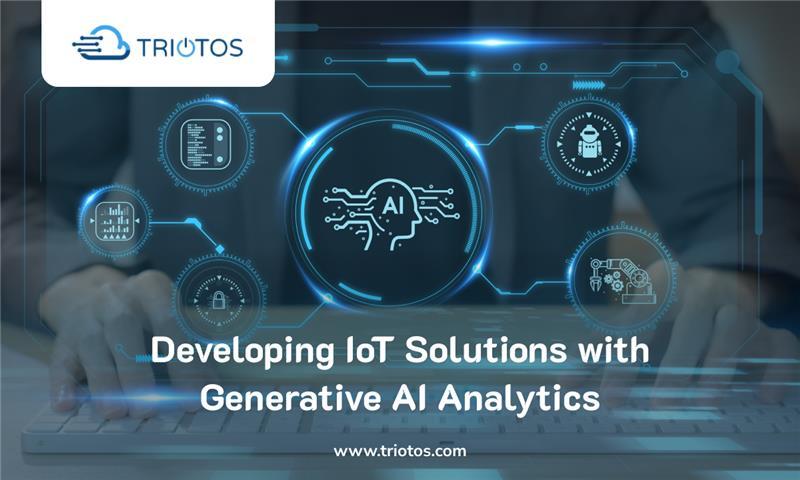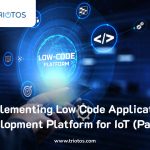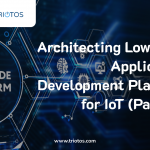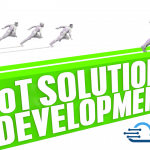
The Promise and hype of Generative AI (Gen AI) has taken the world by storm. No use or field seem immune as AI suppliers from startups to IBM go after business opportunities. What about IoT?
Since its inception, one of the promises of IoT was that by collection and mining data, the understanding of underlying information hidden would lead to greater knowledge and insights about connected IoT devices and systems. While this has no doubt been true many cases, the world of IoT is filled with failed promises of companies collecting inordinate amounts of data just to store it in data bases (including running out of space) hoping that statistical analysis will provide these insights, a task that proved hopeless.
Gen AI has the promise of addressing this if implemented in a way conducive to it. This includes designing IoT solutions so that the data collection includes properly derived and processed data stored in a way to facilitate this type of analysis by taking the relevant ‘use cases’ into account. Examples of use cases are that can be addressed by Gen AI are –
- Operational Understanding
- The most promising field for Gen AI is to derive operational understanding on how systems or products operate throughout their life cycle. This includes detailed info on normal operations and identifying exceptions and classifying all operational states and their attributes.
- Usage Understanding
- Closely related to operational understanding is the actual usage of products and systems. This can be derived by analyzing usage data over extended time periods and classifying it into usage categories, for example normal, heavy, and light and associate attributes with each.
- Failure and Failure Mode understanding
- Failure is an unwanted state of most systems and devices. In IoT it often means that they lose connectivity and stop sending/receiving IoT information. It is a state that should be avoided and therefore information about what causes and leads up to failure is of the utmost importance. Properly designed, an IoT implementation should store such information and Gen AI can provide ways to avoid failures.
- Operational Optimization
- Combining Usage and Operational understanding allows for better guidelines and optimizations.
- Maintenance Optimizations
- Maintenance is all about avoiding failures. The combined understanding of A-D can be used to improve and optimize maintenance procedures and schedules.
As can be seen from these examples there is plenty of value that Gen AI can provide if used properly. The question is how one incorporates it into existing or new IoT implementations by addressing the challenges involved.
Challenges – Start, Wait & Hope versus Design, Test & Deploy
Gen AI works on large volumes of data and IoT data is no different in this perspective. As to volume needed, the more the better, but a good target is ten thousand or more, IoT is good at collecting these large volumes and the most obvious way to start is to simply apply it to the existing IoT data available. While this may work in some cases, it is unlikely to provide meaningful results when IoT implementations are designed only to ‘collect all the data you can’ hoping that analytics and in this case, Gen AI will magically deliver.
A better approach is to design implementations and data collection with the desired results in mind. This approach starts with sketching out the use cases and information needed to address them. Next comes identifying how this information can be derived followed by identifying data that supports this information. For example, failure and failure mode understanding should look at known failure modes and device/system behavior before reaching failure and then look at the information that may indicate future failure and end with what data that can be collected that can provide at least some of this information.
Applying Gen AI to IoT data and info collected this way will hopefully provide underlying information about failures but it requires collection of tens of thousands of data and events over time periods of months and years. However, companies often do not want to wait this long to train their Gen AI models. Is there a way to avoid this wait? Yes, and the answer is IoT device and systems simulations creating virtual devices that generate the same data items as real devices and do it in a way that while not identical, at least mimics them. These simulation models need to have the following characteristics:
- Provide the same IoT data/event items as the real IoT devices.
- Replicate IoT devices with different functional states.
- Generate data/events based on statistical distributions.
- Transfer between states based on different probability distributions.
- Report different data/event item values depending on state.
- Report events using statistical ‘between event time’ distributions.
- Be deployable just like real devices in the IoT implementation.
Using this approach, it is possible to ‘fire up’ and deploy 100s of simulated devices in the real IoT solution. This eliminates the need to wait for real devices to be deployed. Simulations can also use compressed time by generating hundreds of events every hour instead of every day or week meeting the volume needs of Gen AI. Instead of Start, Wait & Hope the IoT solution designer can Design, Test and Run using simulated data to train Gen AI models and adjust simulation models as real data becomes available. Gen AI analytics can therefore be used in the IoT system development design phase, during testing and be available at deployment time. But how does one incorporate and integrate a Gen AI platform with an IoT platform?
Integrating Gen AI with IoT Platform
It is of course always possible to use a stand-alone Gen AI platform with data stored by an IoT platform. The better approach is to incorporate and integrate a Gen AI platform as part of the solution allowing real time adjustments of the gen AI results in an environment fed by both simulated and real data. This allows for continuous fine-tuning and adjustments by, adding new data items and events to the IoT device or system.
At Triotos we are working with a partner to incorporate and integrate Gen AI with our rapid onboarding solution. Using our advanced IoT device/system simulation capabilities our customers have access to Gen AI as part of the Analytics capabilities during the IoT solution development. This allows for development and deployment of complete AWS cloud based IoT solutions with Gen AI capabilities in months instead of years at a fraction of the cost of doing it yourself or using other IoT platforms.







